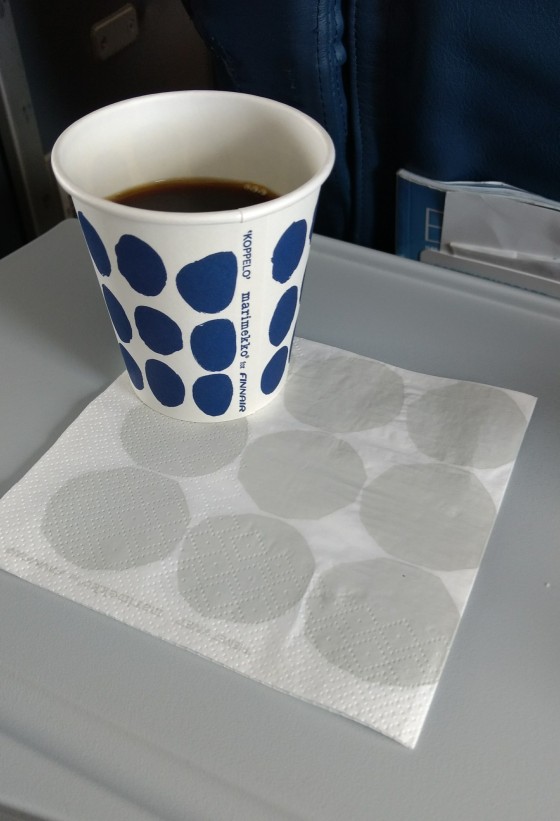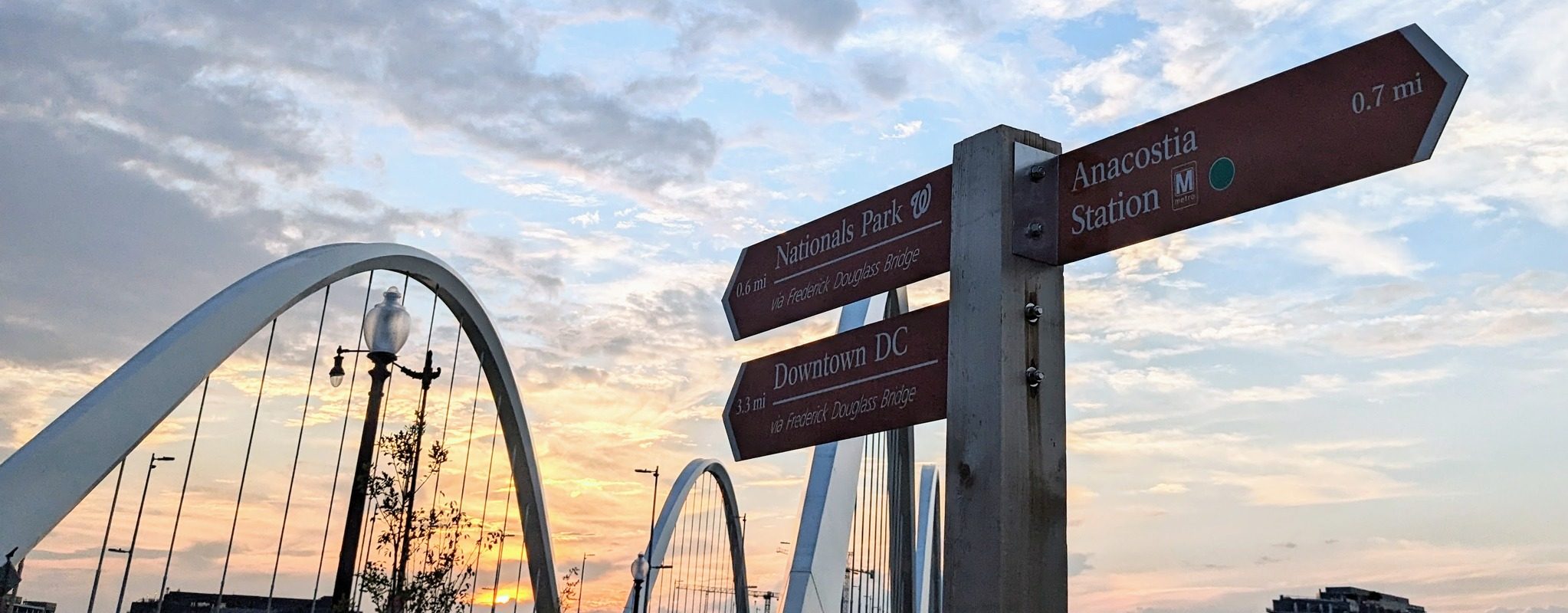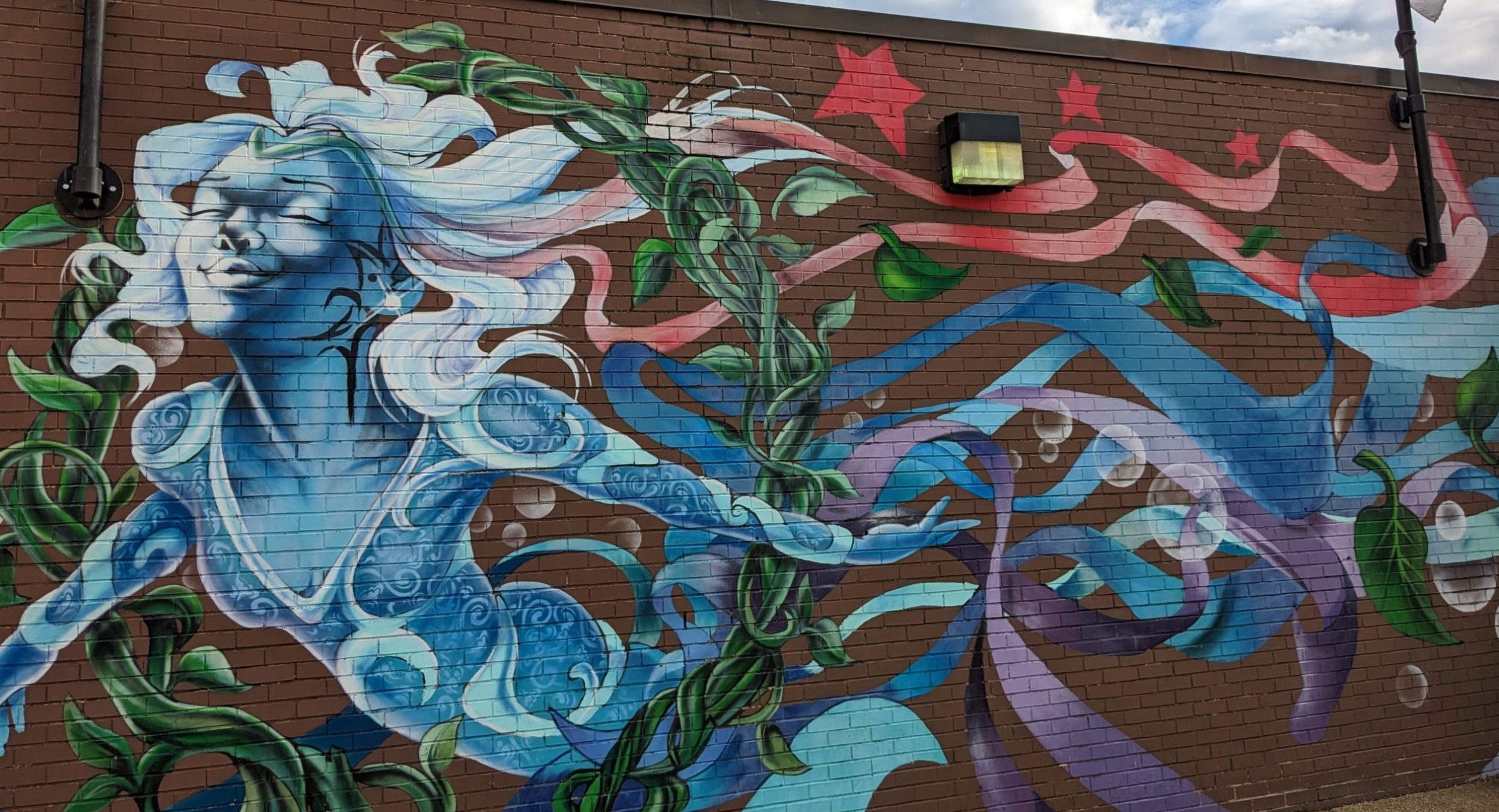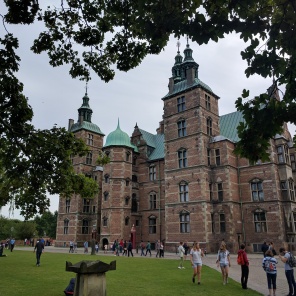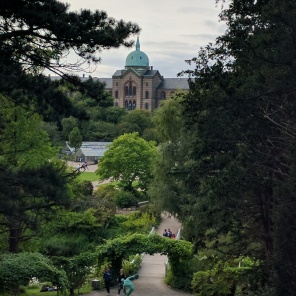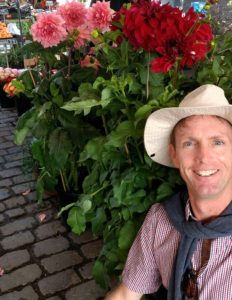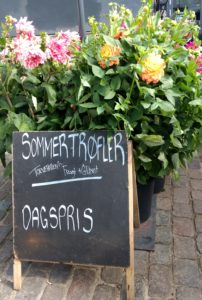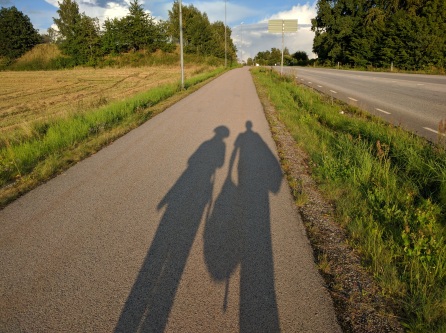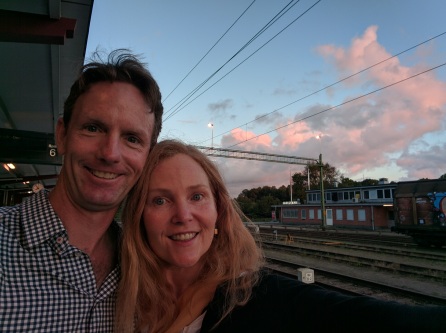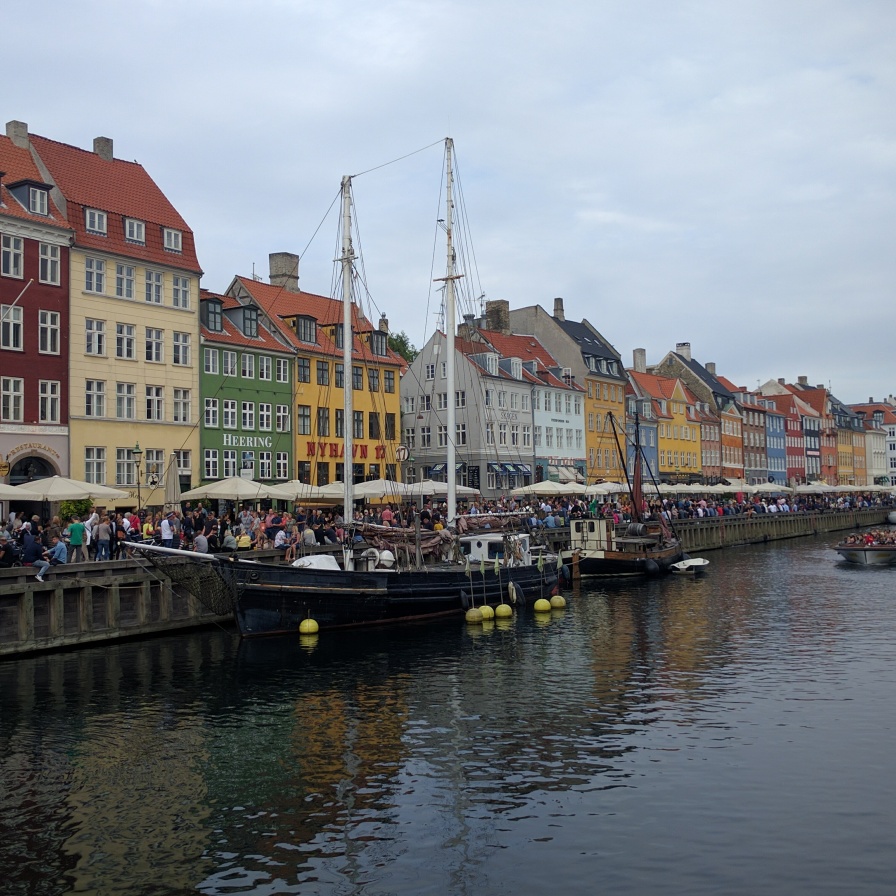 Copenhagen leaves a big impression through small touches. You will find candles on the tables even at a budget Indian restaurant as well as slices of lemon in the water pitcher.
Copenhagen leaves a big impression through small touches. You will find candles on the tables even at a budget Indian restaurant as well as slices of lemon in the water pitcher.
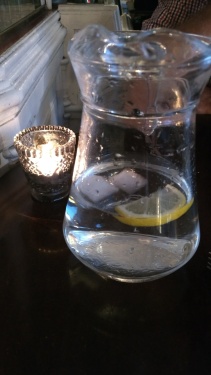 You’ll see throngs of cyclists on a sunny Saturday dressed in smart weekend clothes, instead of sports gear. You can watch groups of four and five out in the harbor in small electric GoBoats and try to figure out what kind of tasty food they sharing for their watery picnics.
You’ll see throngs of cyclists on a sunny Saturday dressed in smart weekend clothes, instead of sports gear. You can watch groups of four and five out in the harbor in small electric GoBoats and try to figure out what kind of tasty food they sharing for their watery picnics.
The people in Copenhagen look content and effortlessly fit and stylish. The Danes seemed to have life and work in balance, with an emphasis on eating together and making everyday life beautiful. They’re obsessed with candles and lighting, a theme reflected in the work of one of Denmark’s most famous artists. Shown here is a version of Olafur Eliasson’s Round Rainbow that was donated to D.C.’s Hirshhorn Museum.

The Danes struck me as being far closer to Italians than the coldly efficient people I’d expected to meet in Scandinavia. A short stop in Copenhagen made me curious about how the Danes live. A quick Google search showed there’s been a recent flurry of books and articles published on the topic, including these pieces in the New Yorker and the Guardian. I’d somehow earlier missed out on the craze about what the Danes call hygge, which appears to be pronounced something close to hooga.
At its best, hygge seems to center on appreciating simple pleasures and time spent with loved ones. The articles and books often bring up warm dinners and hot cocoa in the winter as examples ofhygge, and they talk a lot about candles. There’s also a lot written about how Danes steer clear of ostentation, of seeking excess luxury or attention or money for one’s self. So, it may be an example of hygge that no particular building or garden stood out for me on a weekend visit in late August, although Denmark’s biggest city has many fine examples of both.
The dahlias were perhaps the showiest thing spotted, with their blooms bigger than many dinner plates. The ones pictured here were sold at Torvehallerne market, with my husband kindly posing for me.

Other smørrebrød were more straightforward mixes of tasty ingredients.
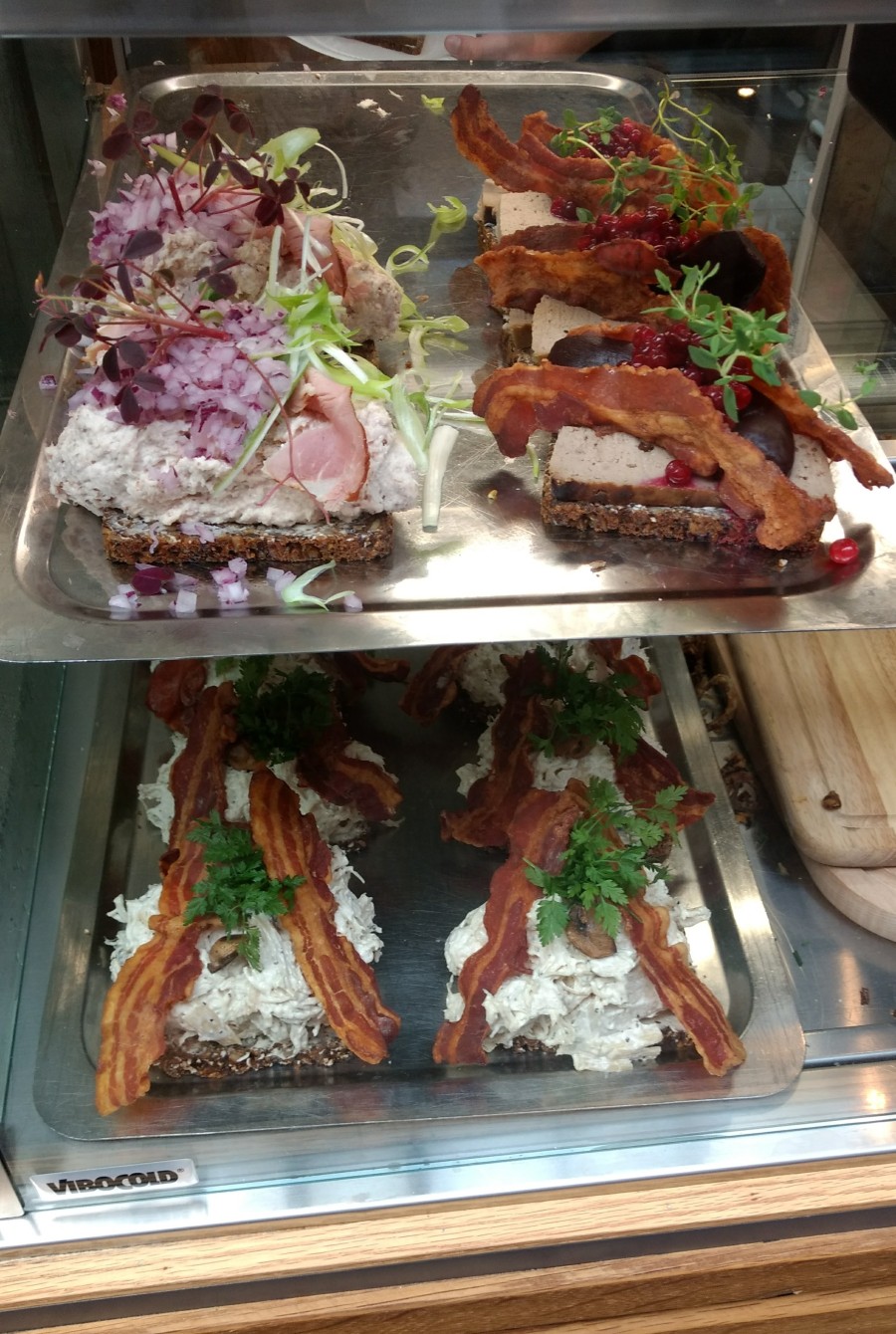
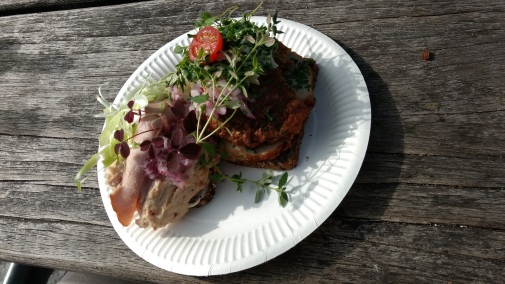
The ham salad on this smørrebrød took David back to his youth in Omaha. He told me of how you’d find this kind of nicely salted ham salad in the delis there. We shared two smørrebrød, eating at a picnic table in the market.
Geological Windfall
Each smørrebrød cost the equivalent of USD $9 or $10. Denmark is an expensive country for travelers. The Danish emphasis on quality comfort goods such as hand-knit woolens reflects the nation’s economic success and social stability, according to the reports on hygge.
The Danes seem to enjoy both good luck and good governance. Like many nations in the region, Denmark benefits from the geological windfall of the North Sea. It’s a net exporter of oil and natural gas, but it still has set an ambitious goal of self-reliance on renewable energy by 2050. The nation appears to have used wealth generated by its energy windfall to keep its finances in order. It had a budget surplus before the financial crisis hit in 2008, according to the CIA World Factbook. Its government spending exceeded its intake by 1.4 percent last year, with even smaller deficits projected for 2017 and 2018.
Denmark also gets top marks on many rankings of happiness, such as the Better Life Index from the OECD, an organization of wealthy countries that studies ways to lift nations from poverty. Danes pay taxes at a higher rate than Americans, but seem in general to like the healthcare and other benefits they receive from their government.
One can see an early version of this Scandinavian social net in the story behind the most famous tourist attraction in Copenhagen. We made a hurried dash to see the statue of the Little Mermaid before leaving Copenhagen. My picture here is oddly cropped to take out the crowd of fellow tourists.
Wikipedia says author Hans Christian Andersen initially planned to have his sympathetic heroine die at the end, expiring into sea foam after a failed mission to win love on land. In the rewrite, she ascends to become a spirit of the air, joining a sisterhood of these creatures. That seems a proper Danish ending, with society finding a cozier option for the poor mermaid.
Denmark shares with its Scandinavian neighbors a generous approach to social benefits. My husband sees this as a reason why a taxi driver in Sweden had no reason to wait for us as a likely customers, and instead left us stranded at a ferry port. Standing on the dock in Karlshamn, Sweden, around 6:30 p.m., we saw our 7 pm ferry to Lithuania sail away. A few mishaps caused us to arrive late, and the ferry folks took their early check-in deadline seriously. The taxi driver who had grudgingly driven us to the ferry port sped off right away, even though he’d assured us on the ride over that we had no chance of catching the boat. He clearly didn’t care about the return fare. So we had to haul our backpacks, which carried clothes and goods for a two-month trip, and our daypacks on a roughly five-kilometer trek back to the train station.
But the weather was fine and the walk took us by fields and a park. We had earlier stocked up on provisions at a little grocery in Karlshamn when we thought we would make the ferry to the Baltic coast beach of Klaipeda. Instead, we ate this food as a train picnic. David made a sandwich of cheese and a kind of salami, while I stuck to the salami alone. We both loved the plump dates we’d found in the store.
On the ride from Karlshamn back to Copenhagen station, we scrambled for a backup option. We hunted online schedules for trains and buses to get to the Baltic countries ahead of our planned Russia trip. It appeared that we just might have time to catch a bus to Berlin, and from there we could connect into a pricey train network. But we had trouble with online bookings and our train into downtown Copenhagen was delayed briefly.
These fortunate mishaps led us to find right answer. It turned out that Finnair offered a cheap flight early in the morning to Vilnius, Lithuania, the city we planned to see after visiting the beach at Klaipeda. We could make up for lost time. At the airport in Copenhagen, the security agent spoke to me in Danish and then switched to Swedish before I could explain that I spoke English. He then addressed me in his fluent English. The agent smiled and appeared chipper as he handled the early Monday airport rush.
On the plane, competent and friendly flight attendants served strong coffee. The cups and napkins used on Finnair were done in a pretty classic print from the nation’s most famous design firm. I sipped my coffee and looked out the window at the clouds. The modern air spirits had come through for us after setbacks with the land and sea.